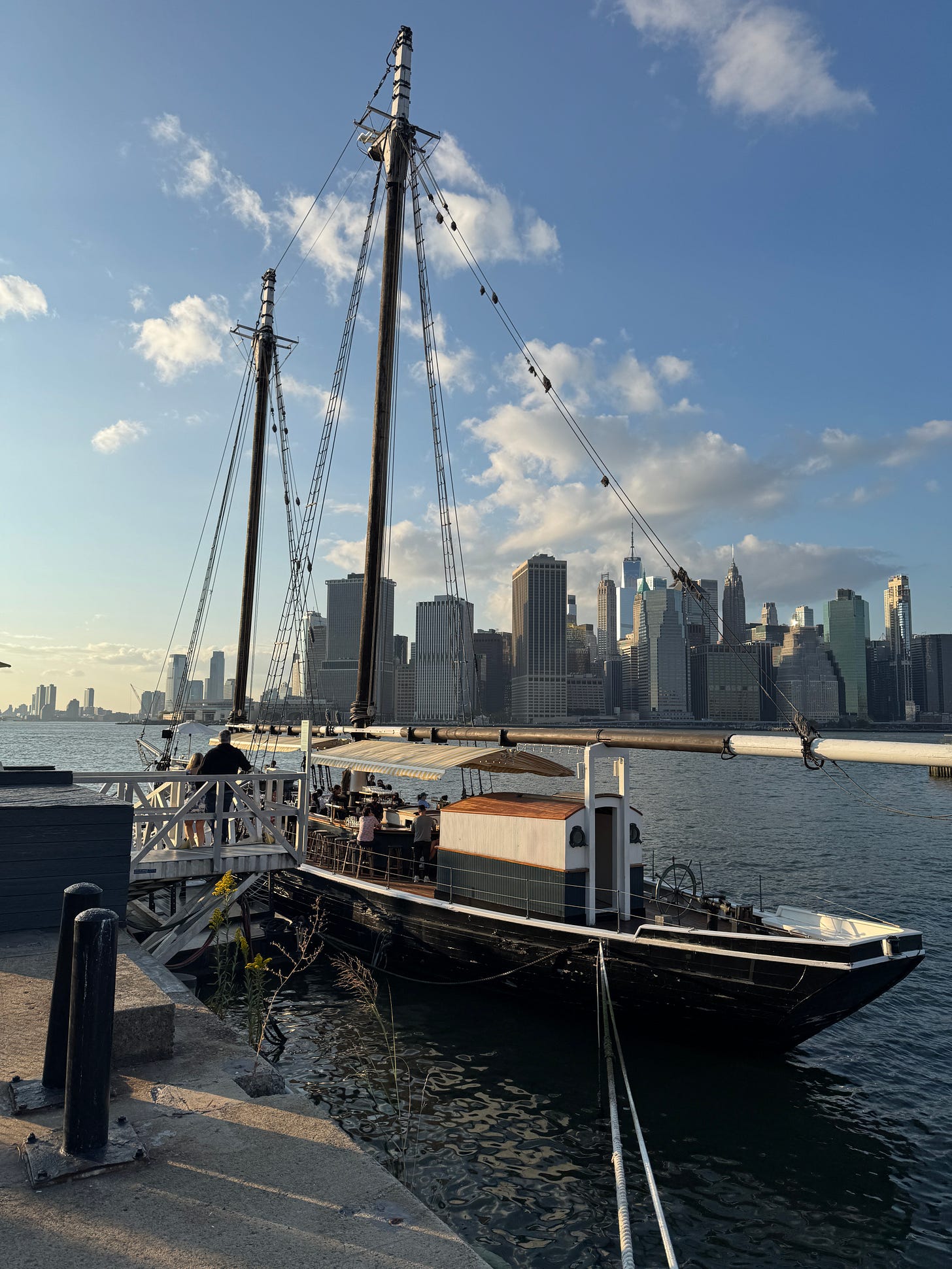Reconstituting
This is Western Coffee—notes on building the creative body. Last time: Sight. The whole series is here. Please share this email; you can sign up free below.
Speaking of surgeons, yesterday I saw the one who operated on my wrist in April after the bike accident. For the first time, he didn’t ask me to schedule another follow-up. If it keeps hurting too much, he said, we might remove the metal plate from the radius next year. But, given what I’ve learned about pain, I may never need to see Dr. Ziets again.
Still: My wrist is not as good as new. Whether it ever will be isn’t something I can say; I do know that I’m still registering progress in what I can do with it, and at what intensity, for how long—but also that gripping the handlebars of a bicycle for any distance entails some fairly searing pain, much as it has since the accident, and that I can’t really do a traditional push-up or a side plank, and that I’ve still got to be careful how much weight (in groceries, dumbbells, or cats) I pick up with that hand.
My authority on this subject seems intent on growing, so here’s an observation: Even the best healing trajectory is not a return to where you were before. You might really wish it were, especially for injuries that are extreme or traumatic or so final that the difference from that earlier life is a lasting cause of suffering. Or, the healing might be so successful or the wound so minor that it seems like little divides the pre-injury past from the present. But the passage through the breaking, of heart or limb or bond, of narrative—it amends us. We are revised.

A challenge for me this summer has been to strike a balance between who I’ve continued to sense all along that I am, the through line, and who I’ve become in the events of the last half-year. Who I am with the plate in the wrist and the modified side planks on my forearm, who I am as an Ironman finisher, who I am as part of a family whose essential story has shifted genre, who I am with a phone whose photo library is a treasury of loss. I feel like the same me; those are my photos. But I’m not; they portray a bygone reality. It’s dangerous to misread that.
I learned yesterday that Thomas Jefferson wanted the United States Constitution to be rewritten every 19 years. That might’ve created some problems, but they are not the ones we have.
So now I’m thinking about reconstitution—not as something we endure or concede to or ignore as it happens, which it absolutely will, but something we undertake and have a hand in. Hence the discussion a couple of weeks ago about how present actions make up identity. Absent a certain approach to reconstitution, the breakages that build up in all of us might become permanent weak points, because the integrity of the overall structure rests on a design from which they were once absent. Reconstitution doesn’t remove the breakages, but it moves them. It puts them in other places relative to our strength. It’s a chance to integrate the damage, rather than live in permanent alienation from it. I’m realizing: Purpose can only arise from what we’re made up of now.
Kindly send me your thoughts, questions, and provocations: dmichaelowen@gmail.com. And say hi on Instagram.
